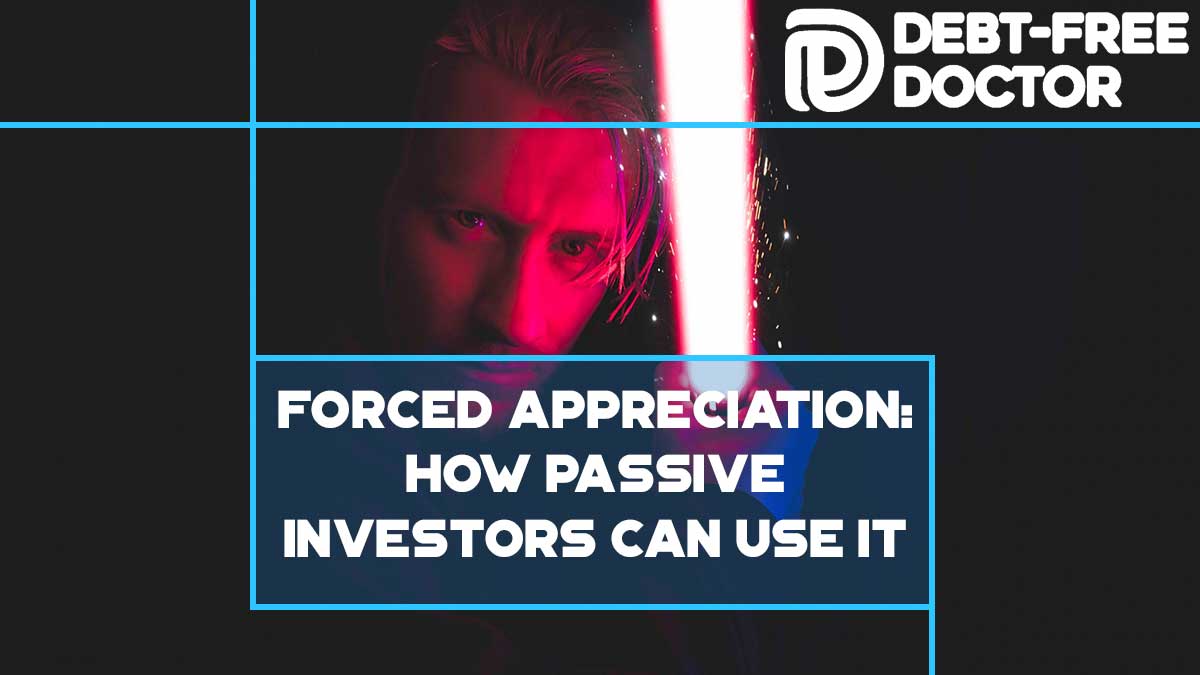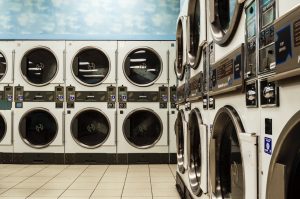“OUCH! Ok dad, I’ll clean up my room if you’ll stop twisting my arm!”
When my kids were much younger, I could get away with a little “force” to get them to do what I wanted them to do. Twisting an arm, finger or ear would usually do the trick. Now as teenagers, it’s much harder to accomplish (they fight back!). 🙂
Speaking of using force, one of my favorite reasons I invest in real estate syndications is something called “forced appreciation.”
The majority of the deals we’ve invested in are in the multifamily sector mainly the value add class which consist of mainly Class B properties.
Have you heard of someone investing in fix and flips? This is a type of value add deal within the single-family home space.
Basically this particular investor purchases a home that needs updating, performs the work, and then sells for a higher profit.
Regarding the multifamily space (one of the main asset classes we personally invest in), this value add component is similar to the fix and flip model as we’re able to update the property at a much larger scale thus “forcing” appreciation.
In real estate there’s two main types of appreciation: Market and Forced
What Is Market Appreciation?
One of the main differences between forced vs market or natural appreciation has to do with control. You have NO control over market appreciation but you do with forced.
Let me explain.
Market appreciation is an increase in the value of an asset caused by changes that occur in the local market cycles. This happens when the demand is LARGER than the supply.
This took place in my hometown of Monroe, LA a couple of years ago when a new medical school was built adjacent to our local university (ULM).
Because of the population growth due to the increase in medical students on campus, this caused a higher renting demand which outweighed the supply of apartments available.
For those that owned rental property nearby, this resulted in a natural market appreciation.
Another way market appreciation can happen is due to changes in interest rates or inflation.
Don’t Miss Any Updates. Each week I’ll send you advice on how to reach financial independence with passive income from real estate.
Sign up for my newsletterWhat Is Forced Appreciation?
Unlike market appreciation, that you have no direct control over, with forced appreciation you do.
This type of appreciation comes from either updating the property, improving the management or both.
There are a variety of strategies you can use to cause forced appreciation (see list below in next section).
In order to increase your personal wealth, you can either:
- increase your income
- lower expenses
- or do both
This is the same way you’re able to force a property’s value to appreciate. You simply increase the money that the property generates (net operating income AKA NOI).
This is done by increasing the rental income of the property and/or decrease the expenses on the property.
Let’s take a look at a view examples in both categories.
How Can a Property Be Forced To Appreciate?
Forced appreciation is caused by increasing the NOI by raising the rental income and/or decreasing expenses. Here’s a few examples in both categories:
Increasing income
#1 Raise rents
The most obvious answer to increase a property’s income would be to raise the rents.
One of the keys to setting yourself up for success is purchasing property in an area where the rents are higher. This way, you know that people are willing to pay more as long as they feel they’re getting value (with the new update).
#2 Making physical improvements
Many times you’re able to make updates to both the exterior and interior of the property.
Interior updates include:
- new flooring
- granite countertops
- stainless steel appliances
- new cabinets
- painting
Exterior updates include:
- new signage
- update fitness center
- new pool or rehab existing one
- parking lot improvements
- painting
- new landscaping
- playground update
- shared spaces (BBQ pit, picnic area, etc.)
#3 Additional income streams
Your tenants will love extra conveniences when it comes to making their lives easier.
And they’ll also be willing to pay more for these such as:
- covered parking
- onsite laundry facilities
- high-speed internet
- cable/satellite
- Amazon package lock boxes
#4 Decrease vacancy rates
Another strategy to increase NOI is decreasing the number of tenants moving out.
Different ways this is accomplished is by providing MORE value than expected, keeping the monthly rent in line with local apartments and actively promoting the property.
Decreasing Expenses
#1 Lower energy costs
One of the best ways to lower expenses is focusing on reducing the overall energy use of the property.
Some of the ways this can be accomplished is by:
- using LED lighting
- updating thermostats
- installing sensors for outdoor lighting
#2 Manage water usage
Similar to energy usage, water regulation can have the same impact in the expense category.
Examples include:
- installing devices to reduce flow in toilets
- using regulators in each shower
#3 Performing proactive maintenance
Similar to a vehicle, it’s always much cheaper to correct a problem BEFORE it happens.
Having a regular maintenance schedule can help prevent major expenses. Changing air conditioner filters and monitoring hot water heaters are a few examples of how this can be accomplished.
How To Calculate Forced Appreciation
Commercial real estate is valued by two methods: NOI and cap rate
As previously mentioned, the net operating income (NOI) is calculated by subtracting operating expenses from the property’s revenue.
It’s a before-tax figure that excludes:
- principal and interest payments
- capital expenditures
- depreciation
- amortization
The second thing that determination is the capitalization rate (cap rate).
Cap rate is used to indicate the rate of return expected for a particular property.
Typically they’re established by sales prices of properties in a particular area relative to the amount of net income these properties generate.
Cap rate formula:

Here’s the all important equation to remember:
Price = NOI/cap rate
By knowing both the NOI and the market cap rate, we’re able to calculate the purchase price or value of a property.
Forced Appreciation Example
Dr. EC is a dentist in a small town wanting to grow her passive income streams. She’s performed her due diligence and has found a reliable sponsor group to invest in her first syndication.
Related: 7 Ways To Evaluate a Real Estate Sponsor
It’s a nice 100 unit apartment building in the booming area of Charlotte, NC. It was built in the mid-80’s and perfect for an opportunity to add value of an investment property thus forcing appreciation.
Both the exterior and interior of all buildings are outdated and it doesn’t appear that regular maintenance has been performed. Also, more exciting news…it has major below-market rents.
The complex is purchased for $8 million dollars and currently each unit rents for $800. Assuming no other income sources, the property’s total income is:
- 100 (units) x $800 x 12 months = $960,000
The current owners have been able to keep expenses relatively low (50%).
NOI calculation
We can now calculate the net operating income:
- $960,000 – $480,000 (50% expense ratio) = $480,000
Cap rate calculation
cap rate = NOI/value
- cap rate = $480,000/$8,000,000
- cap rate = 6%
Fast forward 2 years later….. the sponsor group spent $1,000,000 on capital improvements on both the interior and exterior of all buildings.
At this point, they’re able to charge what other rentals are going for in the area ($1,000/month) while keeping the operating expenses at 50%.
Now let’s calculate the new NOI:
- income = 100 x $1000 x 12 = $1,200,000
- expenses (50%) = $600,000
- NOI = $600,000
Now that we know these figures, we can calculate the new valuation of the property.
Price = NOI/cap rate
- Price = $600,000 / 6%
- New price = $10 million
Dr. EC is excited as the sponsor group originally purchased the apartment complex for $8 million, spent $1 million for renovations, and was able to increase the property value to $10 million within 24 months.
Now hopefully you understand by this example of how you can force appreciation in order to raise a property’s value and increase cash flow.
Summary
Commercial real estate assets are typically valued based on the income stream (NOI) they produce.
The NOI is calculated by taking the property’s gross rental income and subtracting the operating expenses.
The higher the NOI, the higher the value of your property. Two of the main drivers of NOI are the markets and/or the professional property management practices.
Rental prices tend to rise in markets that have a limited supply and strong demand. This allows the NOI to increase without any intervention via the property owner.
On the other hand, an owner may choose the forced appreciation approach whereby the property is renovated which allows rents to be raised due to the increase in value of the property.
Join the Passive Investors Circle





